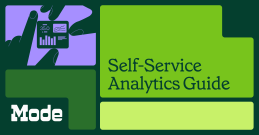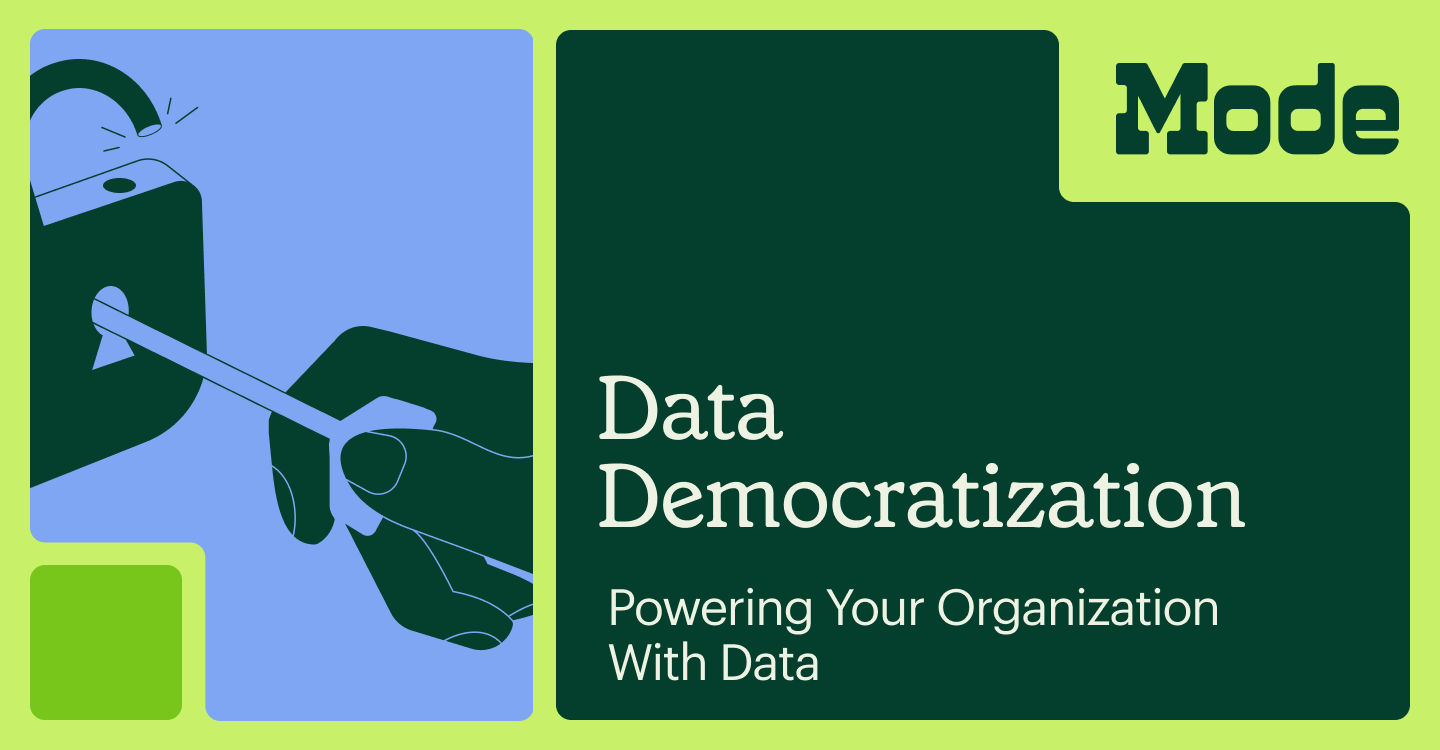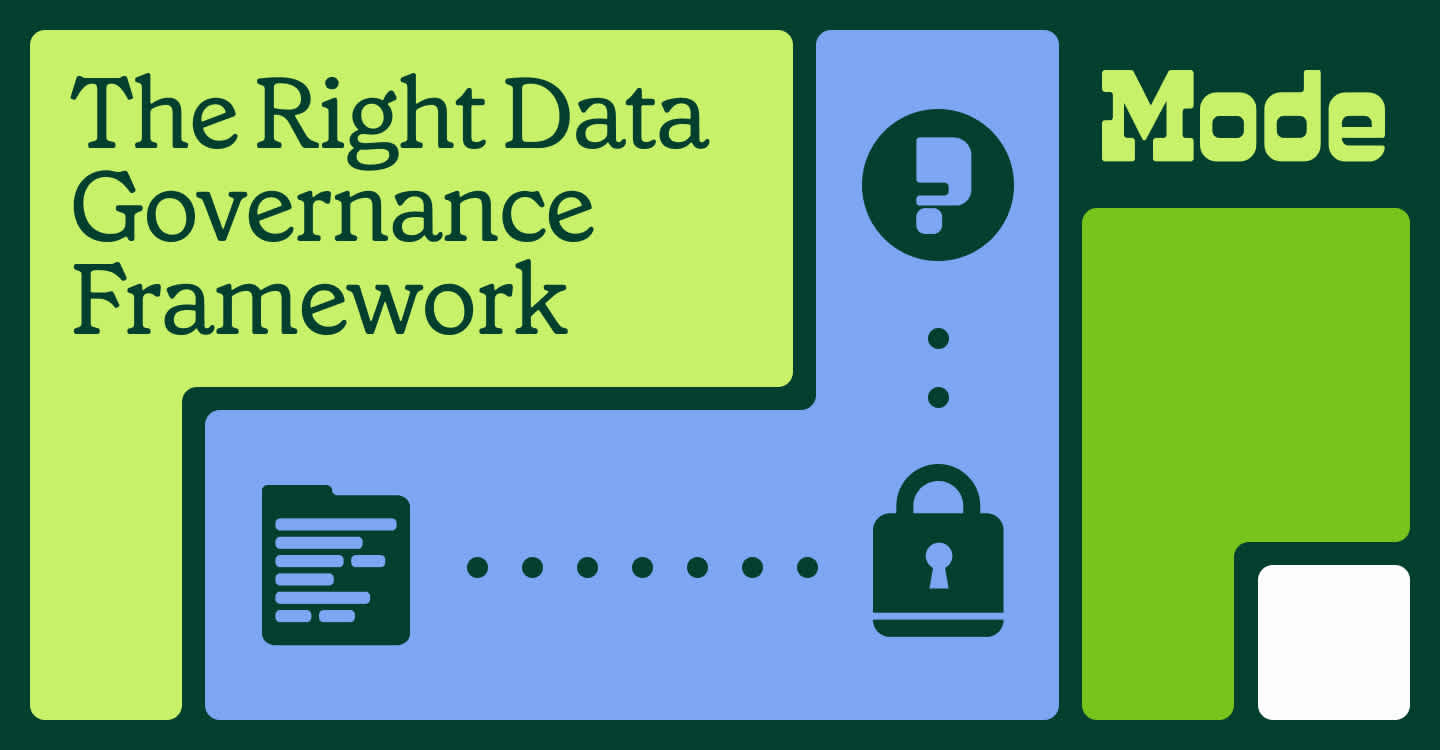Why Today’s Companies Need Collaborative Data Analysis
Jenn Daugherty , Senior Content Marketing Manager
December 15, 2022
NaN minute read

Collaborative data analysis is critical for today’s modern, data-driven company. The richest data insights are generated through collaboration, with shared context from teams around the organization. Data teams and business users working asynchronously across multiple platforms is outdated and becoming too costly.
Collaborative data analysis is a practice that connects analysts and business teams together to realize the real-time analysis and dataset-building that is needed for businesses to thrive in the current competitive, data-fueled ecosystem.
What is collaborative data analysis?
Collaborative data analysis is when multiple people, on different teams or at different companies, work together with the same data on the same analysis to share and exchange context to build richer reports and faster business decisions.
When data and people are brought together from disparate systems, the quality of analysis is enhanced and business insights become more valuable.
Metrics Definition Template
A template for data teams and stakeholders to define metrics together.
Why is collaborative data analysis necessary?
Collaborative data analysis is necessary to create a complete and trustworthy picture of the business investment, initiative, or strategy being measured or decided on. Analysis cannot just start and end with the data team; data teams need VPs or directors of product, marketing, sales, customer success, to partner with them on what metrics to use in reports. Collaborative analysis also means that stakeholders can explore, drill down, and filter data on these reports to get the answers they need without having to wait for the data team.
With so many siloed, team-specific tools in play at a company, the current state of data analysis is…less collaborative. When business users have to toggle between multiple tools or applications, like Marketo, Salesforce, or Excel, to find the right data, they’re wasting valuable time context switching which then dampens enthusiasm for and adoption of these tools. When data lives in multiple places, business users trust its veracity less, creating less adoption and more one-off requests into the data team for rework.
What are the benefits of collaborative data analysis? Why is closer collaboration important?
Collaborative data analysis is necessary to make sure that teams are operating from the most complete/contextual data possible. The more complete data picture a company can have, the more incisive they can be determining or acting on competitive advantage.
1. Faster time-to-insight
When teams try to work in each other’s tools that weren’t built for their method of analysis, time-to-insight is slowed and workflows become a bottleneck. When data teams can respond quickly to a large volume of complex questions in a dialogue with business users, operational efficiency skyrockets. Rippling, a Mode customer, saw a 50% decrease in time-to-insights by practicing components of collaborative analytics: increasing access to data, increasing accuracy of data, and rolling out self-service features.
2. The organization builds collective intelligence.
Collaborative data analysis helps bring everyone’s collective knowledge together, and this can help businesses work toward behaving like a Superorganism, as our VP of Marketing, Emily Ritter, details in a blog, A New Era of BI. When all team members can see that they’re working from the same dataset, they trust the output.
3. People trust metrics more
We’ve heard time and again that even after business teams pull metrics on their own, they still want data analysis to vet them. When people from relevant teams across the board collaborate on analysis, it’s more likely to be trusted and used.
4. Increased data-backed decisions
An environment of collaborative data analysis empowers all employees to make data-backed decisions because everyone has a seat at the data table. When business users can use the same tool that data scientists do to explore their metrics and derive insights from it, it builds an efficient data-first culture where questions can be asked and answered quickly. This allows businesses to react in the agile way that modern growth demands. Our co-founder, Benn Stancil, elaborated on this point in his recent blog about our dbt semantic layer integration, which goes into deeper detail.

A Guide to Self-Serve Analytics
Self-service analytics is necessary—here's what makes the practice successful.
How do you fuel a culture of collaborative data analysis?
You’re ready to shift your data team and business team relationships to that of collaborative data analysis - so how do you get everyone to work with data in one place?
First is the correct mindset. Everyone has to be ready and committed to putting data at the center of decision-making. For teams that don’t think they’re ready to let data guide strategy or make agile, mid-quarter adjustments—making the switch is quicker and more painless than you imagine. Do you have teams that for some reason or another aren’t using data to guide them, or need to build out a simple set of KPIs to track? A little bit of data literacy and help from data teams or data-informed teammates can go a long way to thinking in a data-first way. With teams set up to use and track metrics, you’re moving closer to a collaborative state.
The next important step is establishing strong business-analyst partnerships, where teams can communicate freely and begin to understand how the other uses and thinks about data. For data analysts, they need to understand from business teams the business cases for metrics in order to develop fully fleshed-out datasets for teams to explore. In turn, business teams need to trust their analyst partners and communicate when a need arises to alter a dataset or introduce a new KPI and give context to why certain metrics are being monitored. When there is an active partnership between business and analyst teams, doubt and confusion is removed from the data equation.
Finally, to fully take advantage of collaborative data analysis, you need the right data and business intelligence (BI) platform to do it. Mode’s modern BI platform can help.
Download now

How to Lead from The Center: A Guide for Data Leaders
Learn how to unlock a trusted data experience across your org.
Starting from scratch? Get your data tooling up-and-running first and then focus on process.
The first step here is still ‘put data at the center.’ In action-based terms, this means building a modern data stack first, before anything else, so that data can be brought in from multiple sources, like Salesforce, Marketo, Intercom, product data, etc. Make sure it has the right layers like, storage, ingestion, transformation, and consumption, so all data flowing through is accessible, available, parsable, and shareable.
Once your stack is complete, you need to put into practice the business team-analyst partnerships we detailed previously. Get teams working together, defining metrics and the business implications they inform. Once this is in place, data teams can decide if embedded analytics are the right next step for your teams to further integrate data and dashboards into everyday processes. An advanced deployment like embedded analytics in tools your business teams use daily (like adding on to a Salesforce dashboard) can amplify the ease of ad hoc analysis and motivate teams to ask more questions of the data they’re seeing.
What modern BI features are necessary for collaborative data analysis?
There are a few features that your BI platform should deliver on to help you fully realize the power of your data. Limiting redundant tools should be a first priority, not only to streamline, but to focus development and resources on one tool, one platform, that can support multiple users from both sides of the data conversation - analysts and business team members.
Embedded Analytics Once you have your one-stop shop for data, make sure you can automate reports, delivering KPI tracking on a schedule that makes sense for each team. Make work easier for your teams by embedding analytics into other dashboards to increase productivity and adoption of data use. One of our clients, Honeycomb, did this to amazing effect.
Explorations Beyond slick visualizations and multimodal data, you should also make sure that your BI platform allows you to create explorations in data without the fear of breaking anything. When business teams have the freedom to investigate the numbers and answer more of their pressing questions, you’re creating a data-curious culture that will benefit the entire organization. When analysts have a space to extrapolate and explore, they, too, uncover hidden drivers or latent connections between data points.
Datasets One of the most powerful ways to streamline the collaborative space you’ve created and scale your teams’ impact is to implement datasets. Mode recently launched its Beta for datasets; they are an efficient way to take common queries and codify them as reusable datasets to reduce database load and power the most common reports. These curated, reusable building blocks empower self-serve across an organization.
Scalability Finally, as your company grows and realizes data maturity, or your data inputs exceed your expectations, you need to know that your BI platform is flexible and scalable to support the growth it will help you achieve. Can your platform hold all your data? Can you scale users, add integrations, access support, or create custom data apps?
Mode makes collaborative data analysis easy
Mode is the central hub for your organization’s analysis. Mode’s platform enables collaborative data analysis and unites data teams and business teams around data.
With Mode, you can manage reporting, ad hoc exploration, and statistical analysis all in one platform to save time, reduce redundant work, increase data discovery, and most importantly, work collaboratively. With Datasets (now in Beta - sign up here), Embedded Analytics, and Visual Explorer, along with advanced analytic capabilities for data teams, Mode is built for collaborative data analysis.
Learn more about building a modern, collaborative data stack by downloading our modern BI whitepaper, or try Mode for free to compare for yourself.
Get our weekly data newsletter
Work-related distractions for data enthusiasts.




